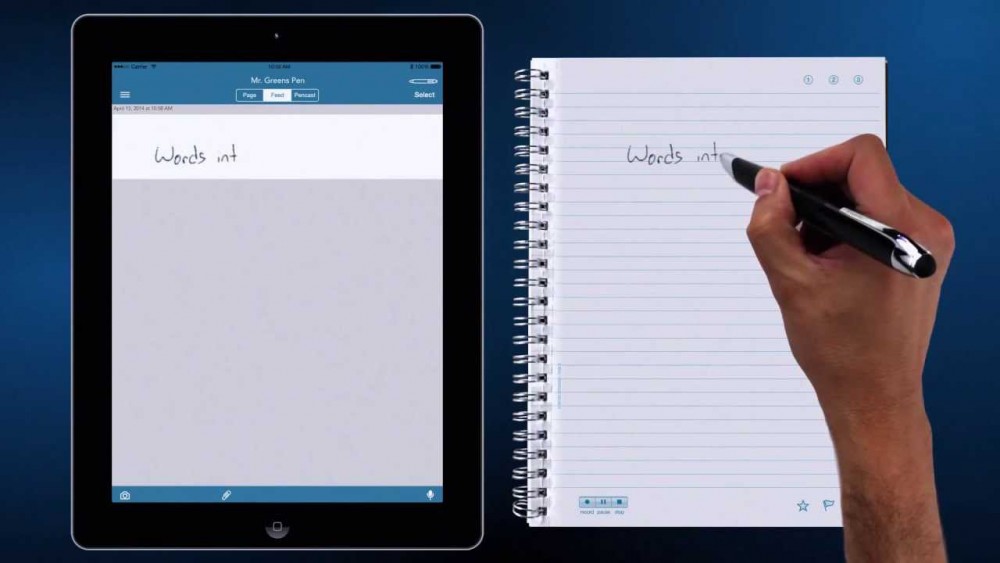Assistive technology features products, apps designed to benefit students

GVL / Courtesy – Livescribe With the Livescribe 3 Smartpen, students are able to digitize their notes.
Oct 10, 2016
In order to showcase different study tools for Grand Valley State University students, Disability Support Resources (DSR) hosted three assistive technology feature tables as part of Inclusion and Accessibility Month. The feature tables were held Wednesday, Oct. 5 and Thursday, Oct. 6 in the Milton E. Ford LBGT Resource Center, the Women’s Center and the Office of Multicultural Affairs.
Brittania Schreurs, a DSR graduate assistant, said the feature tables were hosted to highlight the technology which the DSR staff uses with some of the students registered at their office.
“(These) pieces of technology are not just for students with disabilities,” Schreurs said. “They’re beneficial to everyone.”
At the feature tables, different smart pens and study apps were highlighted.
Jeff Sykes, DSR assistive technology coordinator, demonstrated the capabilities of two different smart pens, the Echo and the Livescribe 3, which can be used to record audio and take notes at the same time. When used on the appropriate paper, the smart pens sync up the written notes with the parallel recorded sections. Users can then touch specific text with the smart pens to play back the recording from the corresponding location.
“Students can go back, replay the recording from any particular place in the lecture and fill in the missing notes,” Sykes said. “They can also write in their own notes later on if they wish, and all of that can be imported into the computer software or the mobile app software.”
The Echo and the Livescribe 3 can be purchased at various venues, including Amazon, Best Buy and www.livescribe.com. Sykes said the GVSU Laker Store has also started selling them this year, along with the corresponding paper and ink refills.
As part of the feature tables, Schreurs also highlighted different study apps. The myHomework app, for example, allows students to organize their homework assignments digitally, while the Quizlet app lets students create flashcards and use other learning tools. Both apps are free and compatible with Apple and Android operating systems and accessible through their respective websites, www.myhomeworkapp.com and www.quizlet.com. Schreurs said these two apps are the ones she shows most frequently to students who want help developing their study habits.
“What we featured is not at all exhaustive of what we actually have here in our office and what is out there,” Schreurs said. “We just wanted to show a few things to catch people’s interest.”
Sykes hopes attendees at the feature tables learned more about the different technology showcased.
“We want to get the word out about the technology because it’s stuff that anyone can use,” Sykes said.
Schreurs emphasized the feature tables were just one small part of Inclusion and Accessibility Month. There will be more events throughout October. She also said the locations for the feature tables were specifically chosen to include each of the five different social justice centers within the Division of Inclusion and Equity.





















